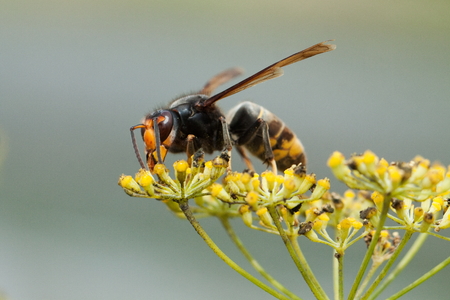It is commonly assumed that wasps and bees are exclusively social insects like termites and ants, but in reality, many wasp and bee species are solitary species. It is difficult to determine the exact number of wasp species that have been documented worldwide, and some reliable sources put the number at 30,000, while others claim that around 75,000 wasp species have been documented. In any case, social wasp species account for a small minority of all documented wasp species, most of which are non-stinging, solitary and parasitic species.
Social wasps that are known to establish nests within or near homes in Massachusetts include yellow jackets, paper wasps, and bald-faced hornets, the last of which is technically a yellow jacket. Only female social wasps can sting humans, and males lack the egg-laying organ that serves as a modified stinger. This organ is known as an “ovipositor,” and unlike bee ovipositors, wasp ovipositors are smooth rather than barbed, allowing female wasps to inflict repeated stings. Very few people are attacked by wasp swarms, but a large number of people have sustained a sting or two from individual foraging wasps. While these stings may occur without provocation or even anticipation on the part of the victim, wasps only sting when they feel threatened.
Wasps inflict stings only when they perceive a threat to their nest, or when an individual foraging wasp becomes disturbed by swatting or shoeing motions. Wasps frequently land on people’s skin to seek out and obtain water, and as long as people remain still in these circumstances, wasps will have no reason to inflict a defensive sting. However, wasps that guard nests may perceive approaching humans as a threat to the nest, in which case they will not hesitate to sting the approaching human. When a wasp inflicts a sting it also secretes an alarm pheromone which is perceived by all other nearby wasps of the same species, prompting them to swarm toward the source of the disturbance. This is why even one individual wasp foraging away from its nest can pose a greater danger than most people are aware. This is why it is important to remain still and calm around individual wasps, even when they make contact with the skin.
Have you ever sustained a wasp sting while in close proximity to a nest?

